Violence in Scorsese Films
Paper by Collier Grimm. Viewed on DVD.
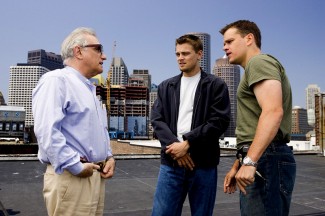 Rationale: researchers have studied violence in the media for decades. Researchers have found that children who consume high levels of media violence are more likely to be aggressive in the real world. Media Awareness Network found that exposure to real world violence, together with exposure to media violence, created an “overload” of violent events. Boys who experienced this overload were more likely to use violent media images to create and consolidate their identities as member of an anti-social and marginalized group (Media Violence, 2009). Given the increased amount of violence depicted in film today and the effects this can have on viewers, it is important to study and evaluate directors that depict graphic violence in their films and how that affects modern audiences. “One thing is certain,” states Media Awareness Network, “the issue of media violence is not going away. Increasingly the debate is focusing on the ‘culture of violence,’ and on the normalization of aggression and lack of empathy in our society” (Media Violence, 2009).
Rationale: researchers have studied violence in the media for decades. Researchers have found that children who consume high levels of media violence are more likely to be aggressive in the real world. Media Awareness Network found that exposure to real world violence, together with exposure to media violence, created an “overload” of violent events. Boys who experienced this overload were more likely to use violent media images to create and consolidate their identities as member of an anti-social and marginalized group (Media Violence, 2009). Given the increased amount of violence depicted in film today and the effects this can have on viewers, it is important to study and evaluate directors that depict graphic violence in their films and how that affects modern audiences. “One thing is certain,” states Media Awareness Network, “the issue of media violence is not going away. Increasingly the debate is focusing on the ‘culture of violence,’ and on the normalization of aggression and lack of empathy in our society” (Media Violence, 2009).
Background: Martin Scorsese is a famous American film director. He directed his first feature length film, Boxcar Bertha, in 1972. Although Scorsese makes films about a wide variety of themes, he is best known for his graphic and violent filmmaking style and his excessive presentations of violence. However, unlike some “violent directors,” Scorsese keeps “a realistic approach, never allowing the violence to overshadow the meanings and consequences that come with it” (Mead, 2007). In an interview with Richard Goldstein and Mark Jacobson, Scorsese described the violence in his films as “plain, straight, and fast, and awkward, awkward and stupid looking, just the way it would happen in real life” (Goldstein and Jacobson, 1976). Scorsese films are all about men, and generally more men watch and imitate his films. Scorsese rarely adresses women in his films unless they are somehow connected to the leading man. His films show an, “artistic de-glorification of violence and the success he has at making the violence realistic, brutal, and coming with a price” (Mead, 2007).
Research Questions:
- Given that violence within mass media has become more socially accepted, has the amount of physical violence in Scorsese films increased over time?
- Over time has the number of deaths depicted on screen increased in Scorsese films?
- Is there an increasing amount of graphic descriptions in Scorsese’s body of films?
- Since 1973 has Scorsese portrayed more instances of disrespect for authority, defiance, and mob/gang activity that lead to violence?
- Over time has there been an increase in disruptive behavior portrayed by Scorsese characters that often leads to violence?
Hypothesis:
1. Yes, the amount of physical violence in Scorsese films has increased.
2. Yes the number of deaths depicted on screen has increased in Scorsese films.
3. Yes there has been an increase in graphic descriptions in Scorsese films.
4. Yes, Scorsese continues to portray more and more instances of disrespect for authority, defiance, and mob/gang activity that lead to violence.
5. Yes, over time there has been a significant increase in the disruptive behavior portrayed by lead characters in Scorsese films.
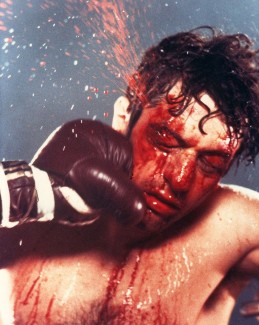 Universe: Marting Scorsese films
Universe: Marting Scorsese films
Sample: Mean Streets (Martin Scorsese, 1973): USA, Alice Doesn’t Live Here Anymore (Martin Scorsese, 1974): USA, Taxi Driver (Martin Scorsese, 1976): USA, Raging Bull (Martin Scorsese, 1980): USA, The King of Comedy (Martin Scorsese, 1982): USA, The Color of Money (Martin Scorsese, 1986): USA, Goodfellas (Martin Scorsese, 1990): USA, Cape Fear (Martin Scorsese, 1991): USA, Casino (Martin Scorsese, 1995): USA, Bringing Out the Dead (Martin Scorsese, 1999): USA, Gangs of New York (Martin Scorsese, 2002): USA, The Departed (Martin Scorsese, 2006):USA
Basic Definitions: I will use two of the seven parameters established by the Parents Television Council’s study, titled, “Wolves in Sheep’s Clothing.” I selected these parameters because they relate to violence in film.
- Physical Violence: including hitting, punching, kicking, pushing, shoving, fighting, drowning, torture, cannibalism, suicide, kidnapping.
- Violence involving objects: guns, knives, fantasy weapons, crashes, explosions, and destruction of property.
- Fire
- Death implied or depicted
- Graphic descriptions
- Disrespect for authority
- Disruptive behavior
- Mob/gang activity
- Racism
Individual Summaries of Items Studied
Mean Streets (Scorsese, 1973): USA
This film was director Martin Scorsese’s first feature length film. Scorsese wanted to make movies about things he knew and portray characters to whom he could relate. Scorsese grew up in “Little Italy” and many events from the film were re-created events from Scorsese’s childhood. In 1997, Mean Streets was selected for preservation in the United States National Film Registry by the Library of Congress as being “culturally, historically, or aesthetically significant”. “Mean Streets”, centers around Charlie (Harvey Keitel), an Italian-American mixed up in the local mafia, and acting as a protector over his rebel friend Jonny Boy (Robert De Niro). Johnny is torn between his love for the church and his love for the streets. His love for Johnny boy leads to his eventual demise. The film is rated R, pays homage to “The Searchers,” and incorporates voiceover narration as a device for drawing the audience into Charlie’s mind, and onto his side. Scorsese has a cameo playing the mobster, Jimmy Shorts, who shoots Johnny Boy and Charlie.
Analysis:
The film contains 14 acts of physical violence, 10 acts of violence involving objects, and 1 graphic description.
Problematic behaviors/attitudes portrayed in the film include 2 acts of disrespect for authority, 3 acts of mob activity, and 5 acts of racism.
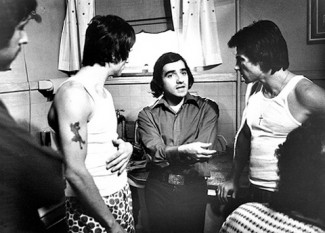
Alice Doesn’t Live Here Anymore (Scorsese, 1974): USA
“Alice” follows a young, and newly widowed Alice (Ellen Burstyn), as she in her son move west and attempt to start fresh in Tuscan Arizona. Alice finds things are different than times were before she was married and ends up having to take a diner job. Alice also discovers that she seems to attract bad men, including her dead husband, and a short affair with crazed cowboy Ben (Harvey Keitel). It isn’t until she meets sweet and easy-going David (Kris Kristofferson) that she begins to discover the direction she wants to take her life in. Ellen Burstyn originally owned this script and told Warner Brothers studio heads she wanted a young, new director for her film. She ended up picking Scorsese and won the Academy Award for Best Actress. It is rated R.
Analysis:
The film contains 1 act of physical violence, 5 acts of violence involving objects, and 1 death depicted.
Problematic behaviors/attitudes portrayed in the film include 2 acts of disrespect for authority.
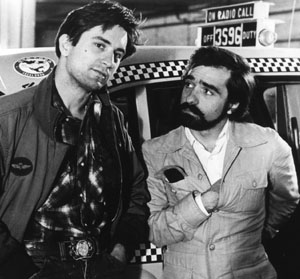
Taxi Driver (Scorsese, 1976): USA
“Taxi Driver” is set on the streets of New York where lonely war vet Travis Bickle (Robert De Niro), drives a cab and searches for a way out of his deep-ceded loneliness and depression. He eventually decides the best way to be happy is to die trying to save a12-year old prostitute named Iris (Jody Foster) from a petty, small-time prostitution ring headed up by “Sport”, (Harvey Keitel). The film won the Palme d’Or at the 1976 Cannes Film Festival. The film is known for the iconic line, “You talkin’ to me?” which made De Niro a star. The film is rated R, and incorporates voiceover narration to create sympathy for the unheroic protagonist. Taxi driver is often considered a direct response to sentiments expressed by public disillusionment with WW2, and a countrywide sense of betrayal after the Watergate scandal. Scorsese makes two cameo appearances in this film, first sitting on a street corner, and second as one of Bickle’s deranged cab fares.
Analysis:
The film contains 5 acts of physical violence, 18 acts of violence involving objects, 5 times where death is implied or depicted, and 9 graphic descriptions.
Problematic behaviors/attitudes portrayed in the film include 4 acts of disrespect for authority, 1 act of disruptive behavior, and 3 acts of racism.
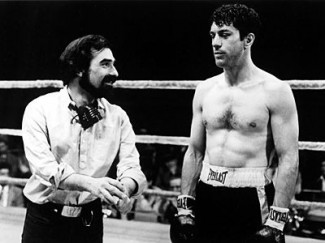
Raging Bull (Scorsese, 1980): USA
“Raging Bull” is a biographical film about Jake LaMotta (Robert DeNiro), a middleweight boxer, adapted from his memoir, Raging Bull: My Story. The film follows LaMotta through his up and down career, and his personal life filled with jealously in insecurities that eventually led to his downfall. LaMotta’s personal demons lead him astray from his dreams and lead his wife and brother to completely cut ties with him, leaving LaMotta sad and alone for the rest of his life. The film, rated R, pays homage to Elia Kazan’s “On The Waterfront”, in a monologue by LaMotta. It also pays homage to Lana Turner’s character in “The Postman Always Rings Twice”, through a costume LaMotta’s wife, Vickie, wears poolside. Scorsese makes a cameo appearance as a stagehand in the film.
Analysis:
The film contains 20 plus acts of physical violence, 6 acts of violence involving objects.
Problematic behaviors/attitudes portrayed in the film include 3 acts of disruptive behavior, and 2 acts of mob activity.
The King of Comedy (Scorsese, 1983): USA
“The King of Comedy”, follows Rupert Pupkin (Robert DeNiro), on his quest to become a famous stand-up comedian. His dream is to appear on his favorite talk show, The Jerry Langford Show, where he believes he will get his “big break.” However, after a series of let-downs and failed attempts to meet with Jerry Langford (Jerry Lewis), Pupkin decides the only way to success is through a kidnapping plot he attempts with the help of one of Langford’s crazed stalkers. Rupert eventually gets on the show, and is sentenced to 6 years in prison for kidnapping, but his story becomes so popular that it makes Pupkin the success he always wanted to be. Scorsese makes a cameo at the end of this dark comedy, playing the director of the Jerry Langford Show. The film is rated PG.
Analysis:
The film contains 4 acts of violence involving objects.
Problematic behaviors/attitudes portrayed in the film include 2 acts of disrespect for authority, and 6 acts of disruptive behavior.
The Color of Money (Scorsese, 1986): USA
“The Color of Money,” is the second installment following Edward “Fast Eddie” Felson’s life as a pool shark played by Paul Newman. The first installment is the 1959 film “The Hustler.” Felson now owns his own pool hall and has retired from professional pool. He meets Vincent (Tom Cruise), a gifted pool player, and decides to make him his protégé. However the two eventually become frustrated with each other and split up, only to meet at the film end as opponents in a game Felson believes he is bound to win because, as he says before credits roll, “I’m back.” Martin Scorsese makes a cameo through a voice-over monologue at the beginning of the film. The film is rated R.
Analysis:
The films contains 3 acts of physical violence, and 2 acts of violence involving objects.
Goodfellas (Scorsese, 1990): USA
“Goodfellas” is a crime drama based on a non-fiction novel, Wiseguy by Nicholas Pileggi ,who also co-wrote the screenplay with Scorsese. The film is based on the rise and fall of Henry Hill (Ray Liotta), a notorious gangster in East New York starting in the ‘50s and up until his arrest in 1980. Hill then enrolls in the Witness Protection Program after naming names to the FBI. The film is rated R, also stars Robert De Niro, and opens with a voice-over narrated by Liotta. Scorsese’s parents both make cameos in the film. Joe Pesci won the Best Supporting Actor Academy Award.
Analysis:
The film contains 20 plus acts of physical violence, 20 plus acts of violence involving objects, 1 fire, 20 plus deaths implied or depicted, and 5 graphic descriptions.
Problematic behaviors/attitudes portrayed in the film include 20 plus acts of disrespect for authority, 20 plus acts of disruptive behaviors, 20 plus acts of mob activity, and 9 acts of racism.
Cape Fear (Scorsese, 1991): USA
“Cape Fear” is a remake of the 1962 film of the same name, which follows a convicted rapist (Robert De Niro), as he stalks the public defender that purposely buried evidence that would have kept him out of jail. After spending 14 years in jail, Max Cady (De Niro) plots to take his revenge Sam Bowden (Nick Nolte), and his family. The film is rated R, and Scorsese’s parents each make a cameo appearance along with Robert Mitchum and Gregory Peck who starred in the original motion picture.
Analysis:
The film contains 20 plus acts of physical violence, 10 acts of violence involving objects, 1 fire, 3 deaths implied or depicted, and 8 graphic descriptions.
Problematic behaviors/attitudes portrayed in the film include 10 acts of disrespect for authority, and 14 acts of disruptive behaviors.
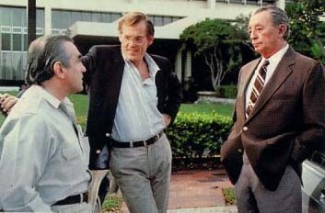
Casino (Scorsese, 1995): USA
“Casino” is another Scorsese crime drama based on the non-fiction book of the same title by Nicholas Pileggi (who also worked on “Goodfellas” with Scorsese). The film follows Sam “Ace” Rothstein (Robert De Niro), who is given the fictional Tangiers Casino to oversee the day-to-day operations and send all access cash flow “back home” to the bosses in Kansas. However, his best friend “Tony the Ant” Spilotro (Joe Pesci) goes money-crazy and starts to ruin things in Vegas, and eventually everything falls apart. When the film was released it had the most uses of the word “fuck” (398) in a feature length film (Wikipedia). The film incorporates voice-over narration, is rated R, and Scorsese’s father makes a cameo along with Frankie Avalon.
Analysis:
The film contains 20 plus acts of physical violence, 20 plus acts of violence involving objects, 1 fire, 20 plus deaths implied or depicted, and 5 graphic descriptions.
Problematic behaviors/attitudes portrayed in the film include 20 plus acts of disrespect for authority, 20 plus acts of disruptive behaviors, 20 plus acts of mob activity, and 9 acts of racism.
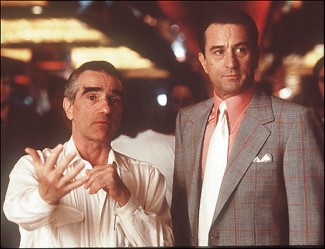
Bringing Out the Dead (Scorsese, 1999): USA
The film is based on a novel by Joe Connelly about a paramedic who works the night shift in Hell’s Kitchen, NYC. Not only is Frank Pierce (Nicolas Cage) haunted by the ghosts of those he is unable to save, but he also suffers from alcoholism and insomnia. Pierce believes he can hear the voices of the dead and those so ill they are unable to speak for themselves. Scorsese makes an interesting cameo in this rated R film as the ambulance radio dispatcher. There is a voice-over narration throughout by Cage.
Analysis:
The film contains 7 acts of physical violence, 1 act of violence involving objects, 8 deaths implied or depicted, and 20 plus graphic descriptions.
Problematic behaviors/attitudes portrayed in the film include 6 acts of disruptive behavior.

Gangs of New York (Scorsese, 2002): USA
“Gangs of New York” is set in the mid-19th century Five Points neighborhood of New York City. It was inspired by a non-fiction book of the same title and is considered an American historical crime film. The film won the Academy Award for Best Picture. The two main themes in the film are Irish immigration and the effects of the Civil War. The film follows Amsterdam Vallon (Leonardo DiCaprio) and his immigrant allies as they try to take down crime boss and politician Bill “The Butcher” Tweed (Daniel Day-Lewis), who killed Vallon’s father years earlier. The film, rated R, was completed in 2001, but shelved for a year because producers thought the extreme amounts of New York violence could possibly make post 9/11 audiences uncomfortable. Martin Scorsese has a cameo appearance as a wealthy homeowner.
Analysis:
The film contains 20 plus acts of physical violence, 20 plus acts of violence involving objects, 3 fires, 20 plus deaths implied or depicted, and 20 plus graphic descriptions.
Problematic behaviors/attitudes portrayed in the film include 20 plus acts of disrespect for authority, 20 plus acts of disruptive behaviors, 20 plus acts of mob activity, and 20 plus acts of racism.
The Departed (Scorsese, 2006): USA
“The Departed”, is a remake of the Hong Kong film “Infernal Affairs,” and won four Academy Awards including Best Director win for Scorsese. The film follows two young boys, Colin Sullivan (Matt Damon), and Billy Costigan Jr. (Leonardo DiCaprio) as they apply to be Massachusetts State Police. While Sullivan rises quickly, Costigan is held back and assigned an undercover cop job because he has mob family ties. However, although Costigan infiltrates the notorious Costello (Jack Nicholson) mob, Sullivan is working inside the “Stateties” as an informant to the Costello gang. “The Departed” is significant in Scorsese’s career because he kills off every lead character before the film’s end, something very unusual in most “Hollywood” films. The film is rated R, has moments of voiceover narration by Nicholson, and Scorsese pays homage to the 1932 film “Scarface” through his use of the symbol X and the Boston State Capital.
Analysis:
The film contains 20 plus acts of physical violence, 20 plus acts of violence involving objects, 2 fires, 20 plus deaths implied or depicted, and 5 graphic descriptions.
Problematic behaviors/attitudes portrayed in the film include 20 plus acts of disrespect for authority, 20 plus acts of disruptive behaviors, 20 plus acts of mob activity, and 20 plus acts of racism.
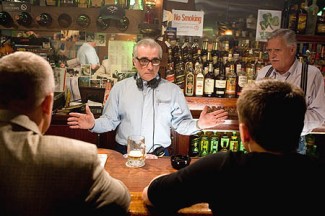
Combined Results and Interpretation of Data
The amount of violence depicted in film has increased ten-fold since the days of Hitchcock when most violence was left to the imagination, or took place offscreen. Thus audiences were forced to imagine, or not, the amount of violence that was probably taking place. However, today the motion picture industry has desensitized movie going audiences with an overload of violent images and depictions. One method for overwhelming audiences with graphic depictions is through rapid-fire editing that makes the violence less real and thus easier to take in all at once. Consequently studies have found that “being steadily exposed to violent images from an early age can have a lasting effect on young children” (The Concerns, 2009”).
Scorsese films are often considered some of the most violent films coming out of Hollywood and also some of the most adored. At an early age audience members often find a connection with one of Scorsese’s “loner characters,” and often misinterpret his depiction of mob life as a glorified one. According to Media Awareness Network, “Researchers have identified three ways in which children may respond to high levels of violence: 1. Increased fear 2. Desensitization to real-life violence 3. Increased aggressive behavior” (The Concerns).
I believe that the violence in Scorsese films has increased significantly over the last 37 years because violence within mass media has become more socially accepted. Violence in films, TV, music, and video games has increased so significantly that we, the general public, have become desensitized to it. Thus, Scorsese has “upped the anti”, or violence, within his films because he is reacting to societal standards. His films reflect reality; says Scorsese, “It’s got to be just as if the Daily News photographer went there and shot the whole thing. It’s gotta be just like a tabloid” (Goldstein & Jacobson, 1976).
To prove this hypothesis I came up with five questions that specifically relate to Scorsese films, which are considered to be some of the most violent in the entertainment industry.
- Given that violence within mass media has become more socially accepted, has the amount of physical violence in Scorsese films increased over time?
- Over time has the number of deaths depicted on screen increased in Scorsese films?
- Is there an increasing amount of graphic descriptions in Scorsese’s body of films?
- Since 1973 has Scorsese portrayed more instances of disrespect for authority, defiance, and mob/gang activity that lead to violence?
- Over time has there been an increase in disruptive behavior portrayed by Scorsese characters that often leads to violence?
To answer these questions I chose 12 Scorsese films that were made from 1973-2006, to analyze. These films include: Mean Streets (Martin Scorsese, 1973): USA, Alice Doesn’t Live Here Anymore (Martin Scorsese, 1974): USA, Taxi Driver (Martin Scorsese, 1976): USA, Raging Bull (Martin Scorsese, 1980): USA, The King of Comedy (Martin Scorsese, 1982): USA, The Color of Money (Martin Scorsese, 1986): USA, Goodfellas (Martin Scorsese, 1990): USA, Cape Fear (Martin Scorsese, 1991): USA, Casino (Martin Scorsese, 1995): USA, Bringing Out the Dead (Martin Scorsese, 1999): USA, Gangs of New York (Martin Scorsese, 2002): USA, The Departed (Martin Scorsese, 2006):USA
I designed a checklist with violent behaviors and problematic attitudes (which often lead to violence) to use as measures for my research. These two categories were then further divided into several subcategories listed below:
- Physical Violence: including hitting, punching, kicking, pushing, shoving, fighting, drowning, torture, cannibalism, suicide, kidnapping.
- Violence involving objects: guns, knives, fantasy weapons, crashes, explosions, and destruction of property.
- Fire
- Death implied or depicted
- Graphic descriptions
- Disrespect for authority
- Disruptive behavior
- Mob/gang activity
- Racism
I then watched all twelve films and inventoried the content listed above for each film and created the chart above.
The results from my analysis of the twelve Scorsese films prove true my hypothesis that violence has increased. The violence in Scorsese’s films began to significantly increase with “Goodfellas” in 1990 and continued to increase from there. This goes along with my theory that the public has slowly become more and more desensitized to violence.
The film that contained the least amount of violence was “Alice Doesn’t Live Here Anymore,” Scorsese’s second film made in 1974. This is Scorsese’s only film that centers on a female protagonist and Scorsese was brought on to direct this film by the star, Ellen Burstyn. The rest of the films I analyzed focus on male protagonist character in male dominated social situations. Scorsese makes films based on what he saw growing up, so inevitably his films reflect a male-centered view of the world, and thus a more violent one.
There was a drop in the amount of violence Scorsese depicted in the two films I analyzed from the 1980s, “The King of Comedy,” and “The Color of Money.” I believe this is due to developments that took place in the business and technology of film during the ‘80s. Almost all of the major studios were merging to become gigantic media corporations, the average studio picture cost more that $60 million to produce, and “an unprecedented number of films were sequels rather than risk-taking originals, and video–first analog, then digital–had become a viable medium for watching and even shooting motion pictures” (Mast & Kawin, 2006). American was also experiencing an era of double-digit inflation, AIDS, a war on drugs declared by Reagan, and an overall increase in wealth within the country. Scorsese’s films from the ‘80s reflect the happier American sentiment of the period. However, his films starting in 1990 reflect an over all backlash to rigid Republic values, war, the Clinton Scandal, and disenchantment with government.
From”Goodfellas” (1990) on, the amount of violence in Scosese’s films increased significantly. For example, there are six times more acts of physical violence in “Goodfellas” as compared to “The Color of Money.” In “Gangs of New York” there were so many instances of violence involving objects and deaths implied that I created a ceiling of twenty plus because it became unrealistic to continue counting. A study from the Harvard School of Public Health recently found that a “ratings creep” continues to allow more violent content into films, and they believe this suggests, “that movie raters have grown more lenient in their standards” (Waxman, 2004). Obviously Scorsese’s films also reflect a “ratings creep” and audiences that are more tolerant of violence. The study also revealed that the average PG-13 film these days looks a lot like what, “the R movies looked like in 1992” (Waxman, 2004). Although all of Scorsese’s films come with an R rating, the violent content has significantly risen in a film like “The Departed” (2006), compared to an R rated film like, “Mean Streets” from 1973.
During the 1970’s, when Scorsese first started making films, the Vietnam War and the Watergate scandal disillusioned the American psyche. American filmmakers, including Scorsese, began to reflect the public sentiments of betrayal and paranoia in their films. Many themes from Scorsese films deal with a strong resentment for authority and glorify organized crime. Although times have changed since Scorsese first started making films, many of these sentiments are still felt within the American public. People are disillusioned with the war in Iraq, the state of the economy, healthcare, etc. Scorsese has not had to change the significant themes in his films because they retain modernity and authenticity and continue to be sores on the American psyche.
The results from the Scorsese films that I analyzed work to prove my hypothesis that violence has increased in Scorsese films because violence has increased in the mass media as a whole. People should take into account the societal standards for mass media in 2009, and thus have an understanding for what they are getting themselves into before viewing a Scorsese film.
Final Summary of Combined Data
The information I gathered for my Content Analysis Research Project on violence in Scorsese films proves that there in fact has been a significant increase in violence from 1973 to present day. The analysis covers a span of 33 years, from 1973 to 2006. Twelve Scorsese films were analyzed and tallied for physical violence, violence involving objects, fire, death implied or depicted, graphic descriptions, disrespect for authority, disruptive behavior, mob/gang activity, and racism. The films analyzed were: Mean Streets (Martin Scorsese, 1973): USA, Alice Doesn’t Live Here Anymore (Martin Scorsese, 1974): USA, Taxi Driver (Martin Scorsese, 1976): USA, Raging Bull (Martin Scorsese, 1980): USA, The King of Comedy (Martin Scorsese, 1982): USA, The Color of Money (Martin Scorsese, 1986): USA, Goodfellas (Martin Scorsese, 1990): USA, Cape Fear (Martin Scorsese, 1991): USA, Casino (Martin Scorsese, 1995): USA, Bringing Out the Dead (Martin Scorsese, 1999): USA, Gangs of New York (Martin Scorsese, 2002): USA, The Departed (Martin Scorsese, 2006):USA.
In that span of 33 years there were over 780 occurrences of violence in the 12 Scorsese films I analyzed. The bulk of the occurrences appeared in film made from 1990-2006. I was looking for occurrences of violence or acts that lead to violence, including: physical violence, violence involving objects, fire, death implied or depicted, graphic descriptions, disrespect for authority, disruptive behavior, mob/gang activity, and racism. Scorsese’s films from the 1970s reflect the violence of Vietnam and sentiments of American resentment and betrayal. His films from the 1980s reflected sentiments of a time when the country was more at ease, bringing back traditional values, and experiencing increased prosperity. From 1990 on Scorsese’s film became significantly more violent as a result of a re-occurring national sense of paranoia over terrorism, distrust for the government and institutions, disillusionment over several wars and scandals, and a plummeting economy. Scorsese’s film began to focus on mafia/gang activity as a means for success, and although he has revealed that his intention is not to glorify the mafia, many fans misinterpret his films. Mob/gang activity thus becomes an alternative means to wealth for many who are disillusioned by government institutions.
Violent behavior in Scorsese’s films increased significantly from 1973 to 2006. In his first film from 1973, “Mean Streets,” there were a combined 39 occurrences of violent behavior as opposed to his latest film from 2006, “The Departed,” where there were over 70 occurrences of violent behavior. Tallies were made in the following subcategories of violent behavior: physical violence, violence involving objects, fire, death implied or depicted, and graphic descriptions. Violence in film has increased significantly over the last four decades because violence within mass media has increased greatly. Since the Vietnam War when technological advances allowed for greater media, especially visual, coverage of violence, American’s have slowly become desensitized to violent images on screen. News footage and documentary film footage have allowed for audiences to see greater amounts of actual violence. Since the Vietnam War the US government has worked to dehumanize our enemies through the media, Iraq and Iran for example, and thus people at home feel less compassion and remorse for what we see happening in the media. We have become a society where violence does not phase us, because we have been trained to dissect it.
Problematic Behaviors and Attitudes that lead to violence were smaller, but equally significant as far as plot and characterization in Scorsese’s films go. There were 353 occurrences of Problematic Behaviors and Attitudes in the Twelve Scorsese films I analyzed. The subcategories were divided as follows: disrespect for authority, disruptive behavior, mob/gang activity, and racism. The highest subcategory of Problematic Behaviors and Attitudes was disruptive behavior, at 109. Societal standards and emotions are once again reflected through these categories, and society’s willingness to accept their display in film has significantly grown over time.
The data I gathered support my original proposal that violence in Scorsese film has significantly increased from 1973 to 2006. Although there was a slight decrease in violence during the 1980s, all of the subcategories increased significantly. Although Scorsese films are critically acclaimed, greatly adored by film scholars, and immortalized, often by very young fans, they are still deeply rooted in violence. Adults should carefully and critically examine Scorsese films before children are exposed to the huge amounts of violence within them. Audiences should make sure they are well informed and aware of the probable content within a Scorsese film before viewing, or allowing young people to view.
Suggestions for Improvement of Future Research
After analyzing the criteria of the research study and how I measure it, the fact that this analysis was done by one person, with one pre-determined notion of what violence is, a future study done by several different people, of different age groups, races, gender and social circumstances would be more effective. My sole viewpoint certainly skews the interpretation of data.
Also, watching an equal amount of films for each decade would have furthered the credibility of the research. This would have created a more accurate and complete analysis and a more distinct comparison/contrast between films and decades.
To make the analysis even more accurate as far as violent content goes I could have also elected to leave out the analysis of Problematic Attitudes and Behaviors that lead to violence, because they were not technically acts of violence.
Finally, expanding the research to include all of Martin Scorsese’s films would make for a more accurate and detailed analysis.
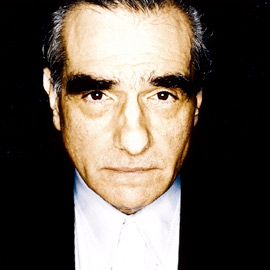
Works Cited
Goldstein, R., & Jacobson, M. (1976). Martin Scorsese Tells All: Blood and Guts Turn Me On! In Brunette, P. Editor. Martin Scorsese Interviews (12). Jackson: University Press of Mississippi.
Mead, B. (2007, May 22).Violence in Martin Scorsese Films. Associated Content. Retrieved May 4,2009, from http://www.associatedcontent.com/article/249758/violence _in_martin_scorsese_films.html?cat=40
Mast, G., Kawin, B. (9th Ed.). (2006) A Short History of the Movies. United States: Pearson Education, Inc.
Media Violence- Introduction. 2009. Media Awareness Network. March 17, 2009. Retrieved from http://www.mediaawareness.ca/english/issues/violence/index.cfm
The Concerns about Movies: Violence. 2009. Media Awareness Network. May 1, 2009. Retrieved from http://www.media- awareness.ca/english/parents/movies/concerns/violence_movies.cfm
Waxman, S. (2004, July 14). Study Finds Film Ratings Are growing More Lenient. Retrieved from http://www.nytimes.com/2004/07/14/movies/study-finds-film- ratings-are-growing-more-lenient.html?fta=y
About this entry
You’re currently reading “Violence in Scorsese Films,” an entry on Student Film Reviews
- Published:
- 05.10.09 / 3pm
- Category:
- Academic Papers, DVD
4 Comments
Jump to comment form | comments rss [?] | trackback uri [?]